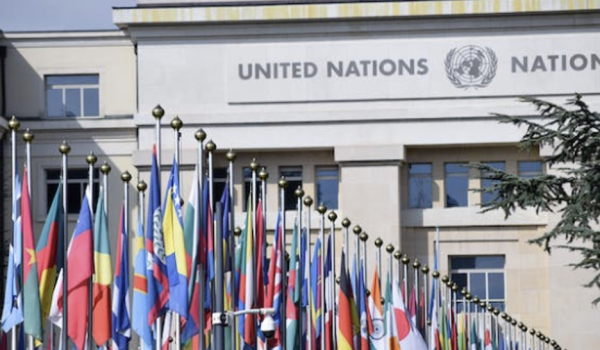The second-most popular route for illegal immigration into Europe is the Western Balkans - a new gate to and major challenge for the European Union. There are two reasons for the recent emergence of this phenomenon.
The first is the visa-liberalisation regime introduced for five countries in the region: Serbia, Bosnia-Herzegovina, FRY Macedonia, Montenegro and Albania. The second is increased migratory pressure at the Greek-Turkish borders, with illegal migrants passing through the Balkans into Europe, especially after Croatia’s accession to the EU in July 2013. At the same time, the nascent legislation, asylum systems and migration policies in Western Balkans countries are insufficient to deal with the challenges posed by this new development.
Migration has a long-standing tradition in the Western Balkan. Furthermore, after the dissolution of Yugoslavia and the turmoil of the nineties, the region became a source of migrants seeking better lives in Western Europe. In the last decade, however, countries of Western Balkans have been transformed from refugee producers to transit points for asylum-seekers and refugees. Nevertheless, the flow and patterns of illegal immigration, its pull and push factors, continue to change.
In 2015 it again hit the headlines around Europe with thousands of Kosovar migrants seeking asylum in Hungary, Austria and Germany. The number of people from Kosovo requesting asylum in Germany suddenly jumped in the first months of 2015; placing the country (which is still not recognised by five EU member states) first in the number of asylum applicants, ahead of Iraq and Syria. Kosovo is the only place in the Balkans where a visa is still needed for travel into the so-called Schengenland. However, since its status remains disputed with Belgrade, whose official position is that Kosovo is still part of Serbia, Kosovars can move across Serbian territory more or less freely, and attempt to enter EU illegally at the Hungarian border. According to some figures, some 40,000 people took part in the latest attempt to reach Europe’s wealthier parts; others think it was more. Yet, even though the number of Kosovars seeking asylum has fallen by 94 per cent in the last two months, the readiness to migrate continue to hit a high scale with 37 per cent of people willing to leave.
Socio-economic factors are facing the entire region, in particular Kosovo which remains Europe’s poorest country. With an estimated 30,000 young people joining the labour market each year, the country is simply not capable of creating enough jobs to satisfy demands for employment. In addition, remittances remain a key support mechanism, with many families dependent upon the support received from friends and relatives abroad. Whilst many argue that Kosovo’s economy producers very little to export, one of its main exports is labour.
The second driver of migratory flows into Europe comes from refugees of wars in Syria, Iraq and Afghanistan, with Greece serving as the main point of entry for those seeking to cross the ‘Balkan Route’ by land into Western Europe. According to Frontex – the agency of the European Union that manages the cooperation between national border guards with a duty to secure the external borders of the Union from illegal immigration, human trafficking – more than 43,000 illegal crossings on the Western Balkans route were detected in 2014. The International Migrant Organisation, meanwhile, clarifies that while migrants are usually moved by public transport or in smugglers’ vehicles, porous borders are usually crossed on foot. The smugglers are rarely present, making detection very difficult. As a result, it makes illegal migration across the Balkans a growing problem. Only in 2014, Serbian police detained 7,025 people who had entered the country illegally.
As the number of undocumented immigrants rises in the countries concerned, reception facilities are almost non-existent and human rights violations are taking place. Human Rights Watch has recently published a report issuing concerns over the harassment and abuse of migrants by police in Serbia. The report specified various cases of police intimidation and abuse that included forced expulsion of the migrants and asylum seekers, including children, to neighbouring Macedonia from where they originally crossed into Serbia. The report stated that migrants and asylum seekers…“ had experienced physical violence and insults in separate incidents at the hands of police officers in southern and eastern Serbia and in Belgrade. They said that police officers slapped or punched them while fingerprinting them or when they registered to apply for asylum. Those who succeeded in applying said the police gave them a notice of their registration with instructions to report to a specific asylum centre within 72 hours”.
More tragically, many of them die in the search for a better life. At the end of April at least 14 illegal immigrants were killed in a train accident in the central Macedonia. The walking route through this country is 250 kilometres long and many of them risk their lives walking by foot on the rails, which they use to help orientate themselves to the northern border with Serbia. Whilst much attention is focused on the deaths of those crossing the Mediterranean in makeshift boats, the plight of those refugees journeying by land has remained largely ignored.
In the meantime, the European Union has increased its efforts to help Western Balkan countries to develop effective responses to combat illegal immigration. Visa liberalisation process has turned these countries into close partners that help protect the Union’s external borders. Consequently, cooperation in matters of immigration and asylum is one of the recently addressed aspects of the Western Balkan integration within the EU. However, even though countries in the region have introduced mechanisms and legislation to manage irregular migration flows, cooperation at the regional level is needed in order to effectively tackle the issue. A result, the initiatives undertaken by the EU aim to strengthen the capacity of States to address mixed movements of migrants and refugees from outside the region in a more predictable and efficient manner while fostering national and regional dialogue and practical cooperation.
And yet, illegal migration is a problem that is bigger than any single state. It is a problem of inequality and unless the world is remade as a far fairer place, there is no real way to solve the grim problem posed by the hundreds who are ready to die in the Mediterranean Sea or on railway tracks in Macedonia, in their search of a better life in the West.
Support us!
All your donations will be used to pay the magazine’s journalists and to support the ongoing costs of maintaining the site.
Share this post
Interested in co-operating with us?
We are open to co-operation from writers and businesses alike. You can reach us on our email at [email protected]/[email protected] and we will get back to you as quick as we can.









